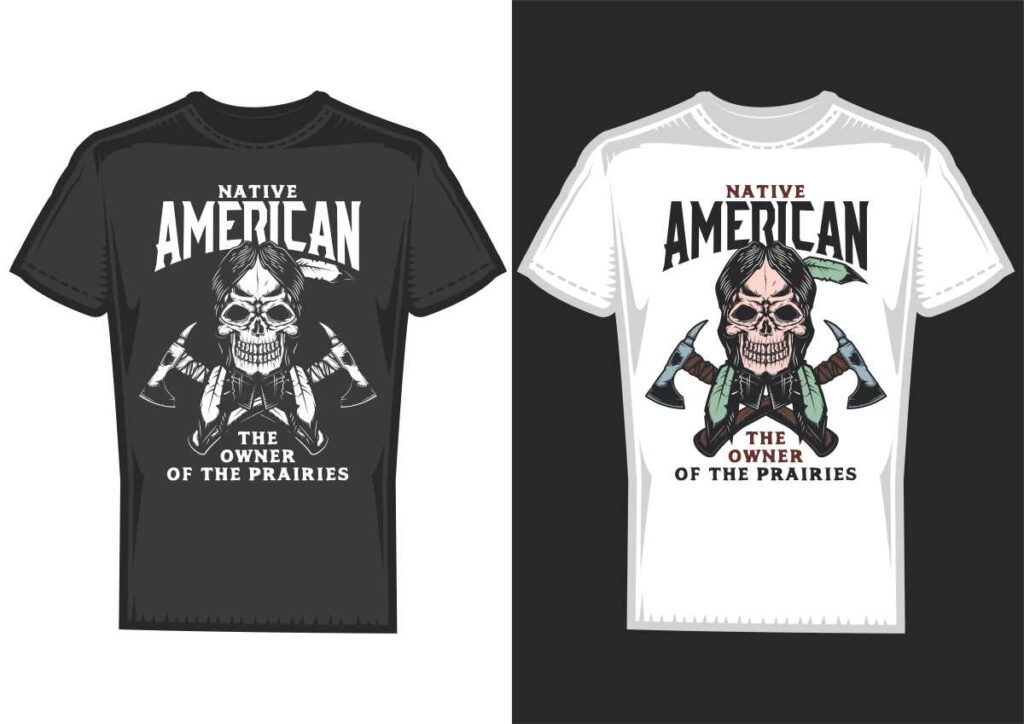Maximize Your Print Production today by diving into the revolutionary world of direct-to-film (DTF) printing. As advancements in printing technology continue to unfold, understanding the essential DTF printing supplies and current DTF trends has never been more critical. In this digital age, enhancing printing production efficiency becomes paramount for businesses keen on standing out in a crowded market. This article will explore must-have DTF supplies that streamline processes and boost sustainability, enabling you to create vibrant, high-quality prints. Join us as we uncover innovative strategies for optimizing your printing practices, paving the way for a successful future in the ever-evolving printing landscape.
In the fast-paced printing sector, optimizing your production capabilities through innovative methods is great for enhancing business operations. Utilizing Direct-to-Film printing techniques offers a seamless approach to producing custom designs, which can significantly enhance both creativity and efficiency. Understanding the right applications of DTF printing supplies can empower businesses to implement sustainable printing practices while addressing market demands. To back your growth planning, this discussion will delve into the latest DTF trends shaping the industry and tools necessary for maintaining peak printing production efficiency. By staying informed about these developments, businesses can confidently navigate the future of textile customization.
Understanding DTF Printing Supplies for Enhanced Production
Direct-to-Film (DTF) printing is rapidly transforming the way businesses approach textile printing, requiring the best DTF printing supplies for optimal results. From DTF printers to transfer films, each component plays a crucial role in ensuring high-quality prints. Businesses must invest in printers that not only deliver vibrant colors and sharp details but are also compatible with various inks designed specifically for DTF applications. This compatibility ensures that the prints are both durable and aesthetically pleasing, enhancing overall customer satisfaction.
In addition to printers, having the right DTF transfer films is essential. A quality film allows for sharp and vivid print transfers. Moreover, businesses should ensure their selected films have excellent adhesive properties to withstand wash and wear cycles. As the DTF printing landscape evolves, choosing reliable supplies has become more critical than ever, influencing production efficiency and the final product’s quality.
Maximize Your Print Production with Quality Equipment
To maximize your print production, investing in top-of-the-line DTF printers is a game-changer. Modern DTF printers not only offer high-resolution printing but also significantly improve batch production capabilities. Selecting a printer designed explicitly for DTF applications ensures faster drying times and compatibility with a variety of inks, ultimately boosting productivity. This efficiency translates into quicker turnaround times that can fulfill customer orders rapidly, giving businesses a competitive edge in today’s fast-paced market.
Moreover, incorporating reliable heat press equipment into your setup is indispensable. An adaptable heat press with adjustable temperature and pressure settings can make all the difference in achieving transfer quality. The market now features automated heat presses that streamline the printing process, further enhancing printing production efficiency. As companies continue to aim for higher productivity and quality, the right equipment is central to maximizing print production.
The Importance of DTF Inks in Production Quality
DTF inks are fundamental in achieving the rich colors and long-lasting durability that define high-quality prints. Using inks specifically formulated for DTF printing is critical, as they ensure compatibility with the printing system while enhancing vibrancy and resilience. This attention to ink technology not only improves the visual appeal of the prints but also their performance across various textiles, setting a standard for excellence in the competitive world of textile printing.
Investing in high-quality DTF inks is not just about aesthetics; it also directly impacts production efficiency and cost-effectiveness. Quality inks minimize the need for reprints due to fading or color discrepancies, reducing material wastage and production downtime. As printers ramp up for 2025, understanding the importance of integrating superior ink supplies into their workflows is paramount for maximizing overall production efficiency.
Embracing Sustainable Practices in DTF Printing
As the global focus shifts towards sustainability, integrating eco-friendly practices into DTF printing is becoming increasingly essential. Utilizing sustainable printing supplies, such as bamboo-based transfer films and green inks, not only helps mitigate environmental impact but also aligns with consumer preferences. Businesses that adopt sustainable printing practices gain a marketing advantage, appealing to environmentally conscious customers while playing their part in conserving resources.
In addition to using eco-friendly materials, optimizing production processes to reduce energy consumption is crucial. Businesses can significantly lower their carbon footprint by investing in energy-efficient printers and heat presses. Sustainable practices, when combined with innovative DTF technology, can transform the printing landscape, paving the way for a greener, more responsible future in the industry.
Keeping Up with DTF Trends for Future Success
Staying current with DTF trends is vital for businesses aiming to maintain competitiveness in the ever-evolving printing landscape. Automation is emerging as a key trend, with machines designed to streamline production processes significantly. Incorporating advanced automation into DTF printing tasks not only enhances efficiency but also allows businesses to scale operations effortlessly, thus improving profitability.
Additionally, engaging with industry events such as the DTF Expo 2025 is crucial for keeping abreast of the latest innovations and best practices in the field. These events provide valuable opportunities for networking and learning about the cutting-edge technologies shaping the future of DTF printing. By actively participating in these forums, businesses can harness new insights and strategies to stay ahead in the competitive market.
Investing in Technology to Enhance Production Efficiency
One of the most effective ways to maximize print production is to invest in state-of-the-art technology. With advancements in printing equipment and software, businesses can achieve better results while also streamlining production. Staying informed about the latest technological innovations ensures businesses can leverage new tools to enhance efficiency, reduce errors, and ultimately improve output quality.
Moreover, the benefits of investing in technology extend beyond just machinery. Training employees to proficiently operate new equipment and understand the intricacies of the DTF printing process can lead to significant production improvements. Educated staff members adapt quickly to new systems and remain updated on emerging trends, which enhances overall operational efficiency.
Frequently Asked Questions
What are the essential DTF printing supplies needed to maximize your print production?
To maximize your print production in DTF printing, invest in essential supplies like high-quality DTF printers, transfer films, DTF inks, powder adhesives, and reliable heat presses. These items enhance printing efficiency and quality, allowing for vibrant and durable prints.
How does Direct-to-Film printing improve printing production efficiency?
Direct-to-Film printing streamlines the printing process, reducing manual steps and allowing for faster production times. By utilizing specialized printers and inks, businesses can achieve high-quality outputs quickly, thus enhancing overall production efficiency.
What current DTF trends should businesses follow to maximize their print production?
To stay competitive and maximize print production, businesses should follow DTF trends such as automation, sustainable practices, and participation in industry events. These trends help streamline processes, reduce costs, and keep companies updated on new technologies.
How can sustainable printing practices be integrated into direct-to-film printing?
Sustainable printing practices in DTF printing can be integrated by using eco-friendly inks, energy-efficient equipment, and recyclable materials. These practices not only minimize environmental impact but also appeal to eco-conscious customers.
What role does training play in maximizing printing production efficiency?
Training is crucial for maximizing printing production efficiency. It ensures that staff are skilled in operating DTF machinery and aware of best practices. Regular workshops help keep the team updated on the latest trends and improvements in DTF printing.
Why is quality control important for maximizing your print production in DTF?
Quality control is vital in DTF printing as it ensures that every print meets high standards. Implementing robust quality checks at each stage of production helps maintain customer satisfaction and reduces costs associated with reprints and wastage.
| Key Point | Details |
|---|---|
| Introduction | DTF technology is a game-changer for print production as we look toward 2025. |
| Why DTF Printing? | Offers versatility, high quality, and cost-effectiveness for customized designs. |
| Must-Have DTF Supplies | 1. DTF Printers 2. DTF Transfer Film 3. DTF Inks 4. Powder Adhesive 5. Heat Press |
| Current DTF Trends | Automation, sustainability, and participation in industry events are key trends to watch. |
| Maximizing Production Efficiency | Invest in technology, training, quality control, and eco-friendly practices. |
Summary
Maximize Your Print Production by understanding the essentials of DTF supplies, which are crucial for enhancing efficiency and quality in modern printing. As we advance into the future, particularly towards 2025, the landscape of direct-to-film printing is set to expand with innovative technologies and sustainable practices shaping the industry. By focusing on high-quality materials, staying informed on trends, and investing in training and equipment, businesses can secure their position in the competitive market, ensuring that they not only meet but exceed customer expectations.



